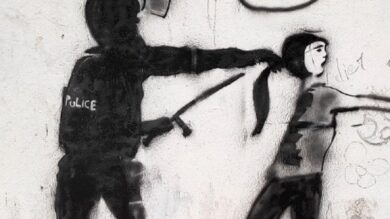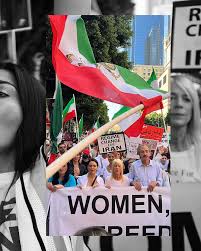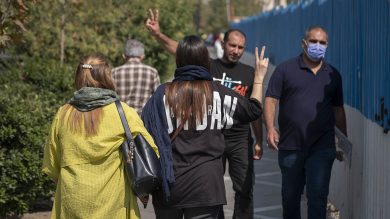In the face of one of the world’s most repressive regimes, Iranian women continue to demonstrate extraordinary courage. Under the control of the Islamic Revolutionary Guard Corps (IRGC)—an entity designated as a terrorist organization by the United States—Iran’s security state seeks to crush dissent, suppress freedom, and enforce strict gender-based laws. Yet, women across Iran are fighting back daily, not just through large-scale protests but through everyday acts of defiance that challenge the IRGC’s control and patriarchal ideology.
These daily acts—bold, subtle, dangerous—are powerful forms of resistance. They represent a population unwilling to be silenced and a movement that has evolved from scattered opposition into a full-fledged call for justice. Here are 10 powerful ways Iranian women are resisting the IRGC every single day.
1. Removing the Compulsory Hijab in Public
One of the most symbolic forms of defiance is the removal of the mandatory hijab. In a regime that uses forced veiling as a pillar of control, many women now walk the streets bareheaded, risking arrest, beatings, or worse.
• Women post videos without hijab under hashtags like #WalkingUnveiled and #MyStealthyFreedom.
• The act not only defies dress codes but directly challenges the IRGC and the regime’s religious authority.
• It’s a statement that bodily autonomy is non-negotiable.
2. Documenting and Sharing Human Rights Abuses
Despite surveillance and internet restrictions, women continue to document abuses, filming protests, beatings, and arrests.
• These videos are uploaded to platforms like Instagram, Telegram, and Twitter, reaching global audiences.
• Journalists like Niloofar Hamedi and Elaheh Mohammadi—jailed for covering Mahsa Amini’s death—are symbols of this resistance.
• Even with the risk of arrest, women persist in exposing the truth.
3. Organizing Underground Education and Activism Circles
Since the government cracks down on any gathering deemed political, many women organize secret educational and activist circles.
• They educate others about women’s rights, constitutional law, and digital security.
• These safe spaces often operate in homes, parks, or online.
• They are vital in building collective awareness and action, especially among young women.
4. Singing, Dancing, and Expressing Themselves in Public
The IRGC and morality police strictly prohibit public performances by women, but many resist through joyful rebellion.
• Women dance in the streets, sing at protests, and post videos online, reclaiming public space.
• Each act is punishable by law, yet these performances become powerful political statements.
5. Refusing to Comply with Gender Segregation
From buses to universities and stadiums, gender segregation is enforced across public life.
• Women increasingly sit in male-only areas, enter sports venues illegally, or challenge guards at checkpoints.
• Each action highlights the absurdity and injustice of state-imposed segregation.
6. Supporting Families of Political Prisoners
Women play a key role in organizing support networks for families of the imprisoned or executed.
• Mothers, sisters, and wives of detainees often lead rallies, speak to foreign media, and petition international bodies.
• These women face intense harassment from the IRGC but remain steadfast.
7. Leading Protests in the Streets
Whether during the “Women, Life, Freedom” movement or fuel protests, women are front-line leaders.
• Their chants, signs, and speeches often ignite broader demonstrations.
• Even when met with brutality, they remain central to Iran’s protest culture.
8. Civil Disobedience in the Workplace and Schools
Women resist by challenging oppression within institutions:
• Teachers protest discriminatory textbooks.
• Nurses refuse to obey male-dominated protocols.
• University students organize sit-ins and boycotts.
These disruptions weaken the regime’s grip from within.
9. Building Online Communities and Campaigns
Despite IRGC cyber surveillance, Iranian women continue to build powerful digital campaigns:
• Hashtags like #MahsaAmini, #WomenLifeFreedom, and #BanIRGC trend globally.
• These networks provide emotional support, share protest tactics, and amplify voices otherwise silenced inside Iran.
10. Taking Legal Action and Publicly Speaking Out
Though the courts are controlled by regime loyalists, some women take cases to international platforms:
• Activists speak at UN events, provide testimony to human rights organizations, and partner with global NGOs.
• These efforts raise pressure on the regime and put the IRGC’s crimes on record for future accountability.
Conclusion: Everyday Acts, Extraordinary Impact
The bravery of Iranian women is transforming resistance into revolution. They fight not only for themselves but for the future of an Iran free from fear, control, and violence. Each act of defiance against the IRGC, no matter how small, is a thread in a much larger tapestry of liberation.
Their resistance shows the world that freedom isn’t just won on battlefields or through elections—it is earned daily, through action, courage, and an unbreakable spirit.
Join Our Newsletter!
Stay informed with the latest updates, news, and ways to take action in the fight for justice and global security. Sign up now to get updates delivered straight to your inbox!





